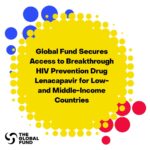
due to perennial prolonged droughts
By Joyce Chimbi | j.chimbi@gmail.com
Dry rivers and shallow wells characterise the terrain in the Southeastern parts of Makueni County.
Ravaged by a severe drought where temperatures rose to heights not experienced in the last 40 years, residents fear that serious effects of climate change may have accelerated sooner than expected.
That even bringing down global warming to less than 1.5 degrees Celsius as espoused in the Paris Agreement will no longer be enough is a reality slowly dawning on the people.
“In October, we were feeding our cows that had just calved porridge because we had nothing else to offer and they could not walk for long distances looking for water and pasture,” says Morris Muli from Usungu village in Makueni.
At the height of the drought, from February to October 2022, along the Garissa-Nairobi highway, children waited under the scorching sun for left-over food items and drinks from travellers.
Animal carcasses and goats at the verge of death from lack of water and pasture could also be seen along the highway. Even in the face of looming threat to life from the most prolonged dry spell, pastoralists do not consume dying livestock.
Kenyan government data shows that across Arid and Semi-Arid Lands (ASAL) spanning over 23 counties, the drought killed an estimated 1.5 million livestock.
“Worse still, the country’s place as a biodiversity hotspot is under threat. We have seen a serious decline in wildlife, especially between February and October 2022. One of the big fives was devastatingly ravaged by the drought,” says John Mwangi Gicheha, a biodiversity expert and independent researcher.
Kenya Wildlife Service (KWS) released a worrisome report that an estimated 205 elephants died in just nine months. This, Gicheha says, has heightened fears that the country’s broken relationship with nature is reaching a point of no return.
The country’s first ever National Wildlife Census report finalised in August 2021 pointed to signs of trouble.
For instance, at least five wildlife species are critically endangered and could disappear in the immediate future. There are just 1,650 Tana River Mangabey, 897 black rhinos, 497 Hirolas, 51 Sable antelopes and 15 Roan antelopes.
These findings are in line with the 2022 Living Planet Index, which analysed approximately 32,000 populations of 5,230 species across the world. The Index was conducted by the World Wide Fund for Nature (WWF), an independent conservation organisation.
It is the most comprehensive report on the state of global vertebrate wildlife populations and it makes a startling revelation, that the world’s wildlife populations have declined by 69 per cent since 1970.
The greatest regional decline in wildlife population is in the Latin America and the Caribbean region whose average population decline is 94 per cent.
Africa comes second with a 66 per cent decline in its wildlife populations over the past 52 years and across the board, the poor and marginalised remain highly vulnerable and most affected by the decline.
By tracking trends in the abundance of mammals, fish, reptiles, birds and amphibians around the world since 1970, a disturbing image emerged; that one million plants and animals are threatened with extinction. Worse still, 1-2.5 per cent of birds, mammals, amphibians, reptiles and fish have already gone extinct.
Key findings include revelations that monitored freshwater populations are hardest hit as there is an alarming decline of 83 per cent in the last 50 years, more than any other species groups.
Overall, the global abundance of 18 of 31 oceanic sharks and rays declined by 71 per cent since 1970. By 2020, three-quarters of sharks and rays were threatened with an elevated risk of extinction. Kenya is currently home to nine whale sharks, two blue whales and 17 tiger sharks, according to the National Wildlife Census.
The decline in freshwater population is mainly caused by habitat loss and barriers to migration routes, which account for an estimated half the threat to these populations.
Further, only 37 per cent of rivers that are longer than 1,000 kilometres remain free flowing in their natural state.
“The crises that are currently unfolding are the climate change and loss of biodiversity. In Kenya, we are talking about the endangering of mangroves and consequent loss of marine ecosystem, overfishing and the endangering of wild tree species due to overlogging,” says Timothy K Orare, a university lecturer.
A report by the Intergovernmental Science-Policy Platform on Biodiversity and Ecosystem Services (IPBES) revealed that illegal trade in wild species represents the third largest class of all illegal trade, with estimated annual values of up to US$199 billion (Ksh24 trillion). Timber and fish make up the largest volumes and value of illegal trade in wild species.
Orare says there is an urgent need to redefine “our relationship with nature”.
“Nature does not solely exist for our own benefit as human beings, nature is not an infinite resource. One in five people globally directly rely on wild plants and algae for their food and income. On current trajectory, we are witnessing a collapse of livelihoods and economiesm,” he says.
Orare says people must learn to live as one with nature, or living in accordance with nature.
“We are currently living from nature. Prioritising short-term economic gains and profits but the consequences are unfolding right before our very eyes. Our survival as human beings in closely intertwined with nature,” he says.
Gicheha echoes other biodiversity experts in cautioning against dominating the natural world irresponsibly, taking nature for granted, exploiting of resources wastefully and unsustainably, and distributing these resources unevenly because these actions have life altering consequences.








